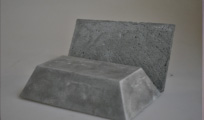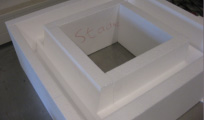Elma Durmisevic
Michael McDonough
Ton Venhoeven
Ahmet Hadrovic
Michael Braungart
Marcel Vroom
Wim Poelman
Rudi Daelmans
Martin Smit
Nirvana Pistoljevic
Natasa Perkovic
Sanja Durmisevic
Miriam Losse
Jan Brouwer
Martin Wollensak
Thomas Bednar
Maarten Dansen
Jaap Wiedenhoff
Adnan Pasic
Ivan Straus
Job Roos
Boran Pikula
Dzenana Bijedic
Haris Hadzialic
Ejub Dzaferovic
Almedina Hadzic
Alisa Grabus
Sanela Klaric
Azra Korjenic
Ken Yeang
Dushko Bogunovich
Michael McDonough
Ton Venhoeven
Ahmet Hadrovic
Michael Braungart
Marcel Vroom
Wim Poelman
Rudi Daelmans
Martin Smit
Nirvana Pistoljevic
Natasa Perkovic
Sanja Durmisevic
Miriam Losse
Jan Brouwer
Martin Wollensak
Thomas Bednar
Maarten Dansen
Jaap Wiedenhoff
Adnan Pasic
Ivan Straus
Job Roos
Boran Pikula
Dzenana Bijedic
Haris Hadzialic
Ejub Dzaferovic
Almedina Hadzic
Alisa Grabus
Sanela Klaric
Azra Korjenic
Ken Yeang
Dushko Bogunovich

Lecture:
Material Design by Technomimicry
18:00h
Day two, Saturday 10 September
Collegium Artisticum, Sarajevo
WIM POELMAN
Wim Poelman (1948) is full professor Product Realisation at Twente University of Technology.
Since his master degree industrial design engineer (Delft 1974) his interest has grown for technology aspects of product development, which resulted in his thesis with the title Technology Diffusion in Product Design. Apart from his thesis he wrote several books about product development theory and practice.
Since his master degree industrial design engineer (Delft 1974) his interest has grown for technology aspects of product development, which resulted in his thesis with the title Technology Diffusion in Product Design. Apart from his thesis he wrote several books about product development theory and practice.
Introduction to the topic and related problems
In the title, “Material design” refers to the design of materials as one of many design disciplines like architectural design, graphic design, fashion design, mechanical design, etcetera.
Material design is not recognized so much as a design discipline, although the design of new materials plays an important role in industrial innovation in general. New materials are not regarded as a result of a design process but rather as a result of research. Nevertheless, the amount of new materials grows exponentially, which can be noticed in the also growing amount of material databases like Materia, Material Connection, Materio, etcetera. There is only little literature on methodology for material design. It is clear that general methodology in the field of design is applicable on materials, but still material design implies specific design problems for which there is no support.
In the context of material innovation, distinction can be made between material inventions, material development and material design. Material inventions are related mainly to chemical and physical properties of materials. Examples are plastics, technical ceramics and graphene. Material development is mainly refers on processing techniques leading to added value of the materials. Examples are foamed materials, pressure moldable wood and surface treatments. Material design, in the context of this paper , is not focused on the physical chemical properties or processing techniques but on the creation of material functions. Examples are esthetic materials, smart materials and materials with new structural, mechanical or constructive functions.
In the title, “Material design” refers to the design of materials as one of many design disciplines like architectural design, graphic design, fashion design, mechanical design, etcetera.
Material design is not recognized so much as a design discipline, although the design of new materials plays an important role in industrial innovation in general. New materials are not regarded as a result of a design process but rather as a result of research. Nevertheless, the amount of new materials grows exponentially, which can be noticed in the also growing amount of material databases like Materia, Material Connection, Materio, etcetera. There is only little literature on methodology for material design. It is clear that general methodology in the field of design is applicable on materials, but still material design implies specific design problems for which there is no support.
In the context of material innovation, distinction can be made between material inventions, material development and material design. Material inventions are related mainly to chemical and physical properties of materials. Examples are plastics, technical ceramics and graphene. Material development is mainly refers on processing techniques leading to added value of the materials. Examples are foamed materials, pressure moldable wood and surface treatments. Material design, in the context of this paper , is not focused on the physical chemical properties or processing techniques but on the creation of material functions. Examples are esthetic materials, smart materials and materials with new structural, mechanical or constructive functions.


© 2011 SARAJEVO GREEN DESIGN FESTIVAL
